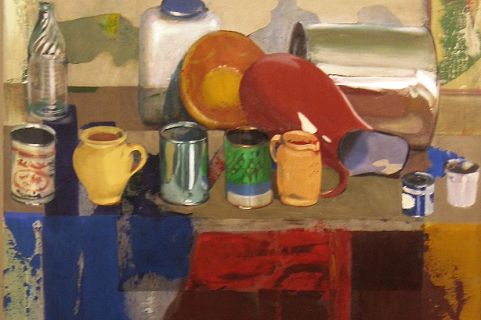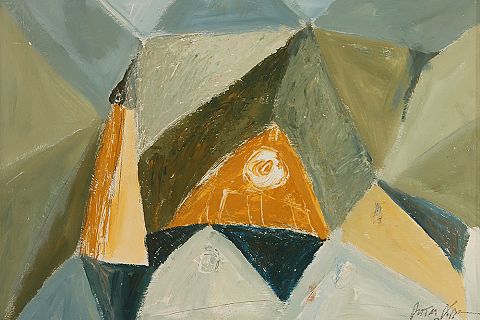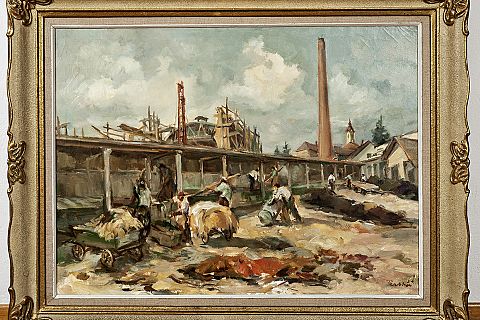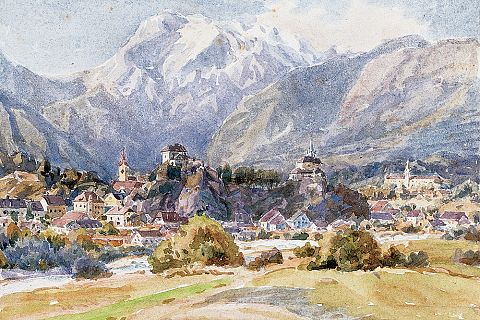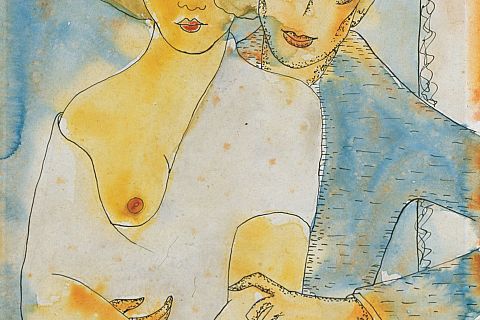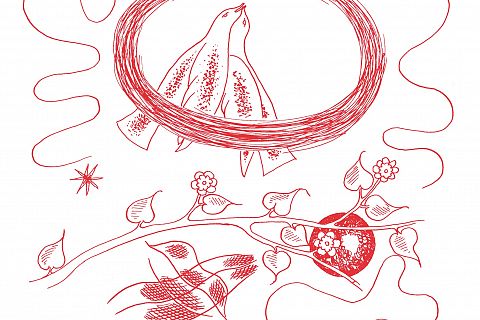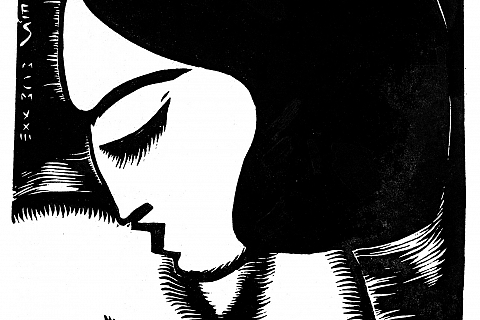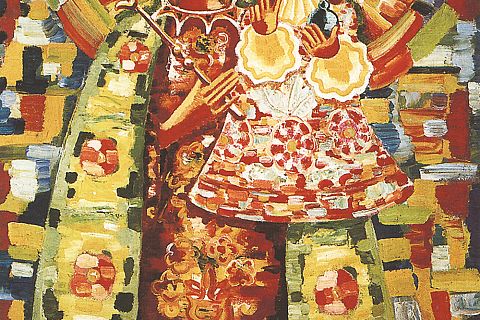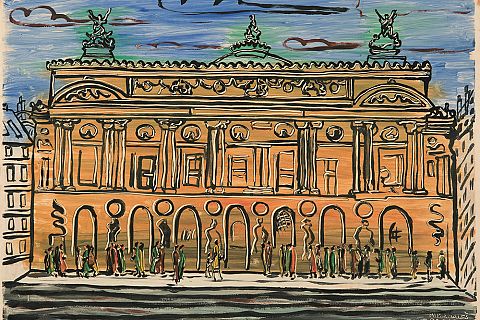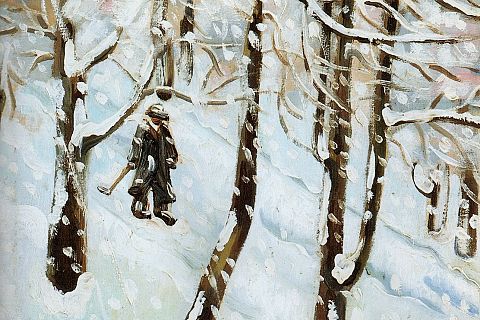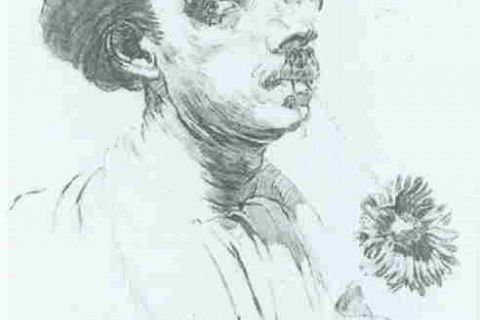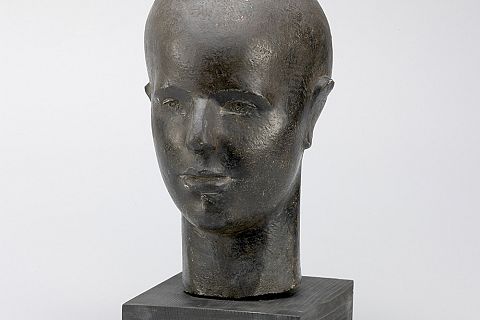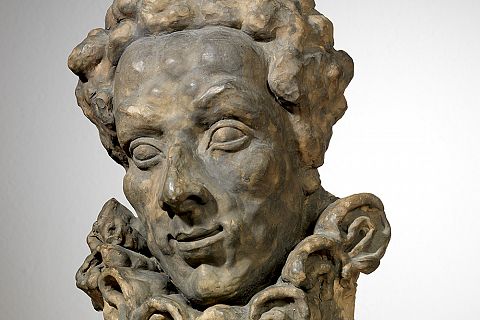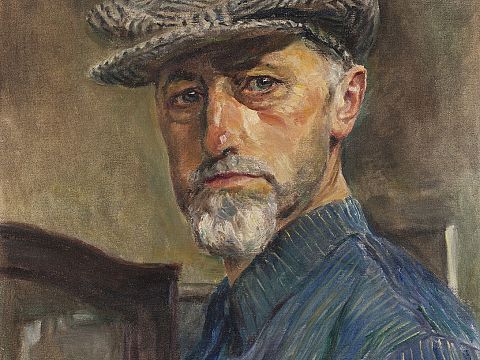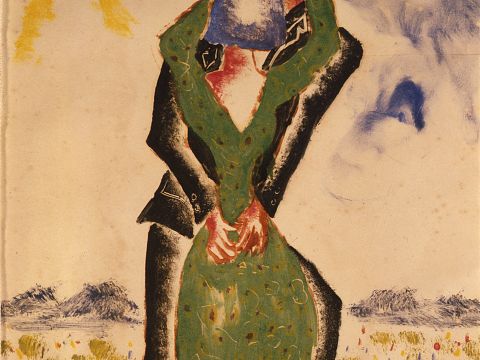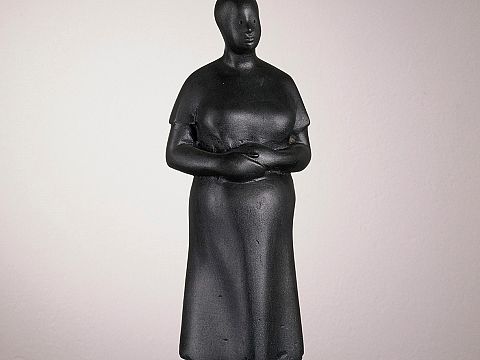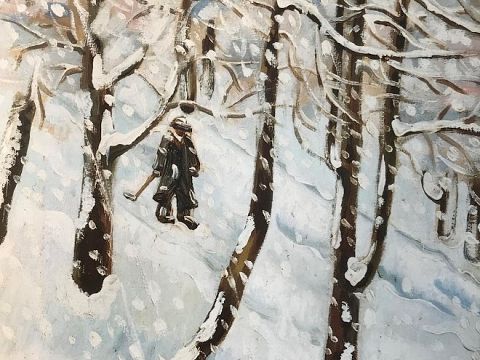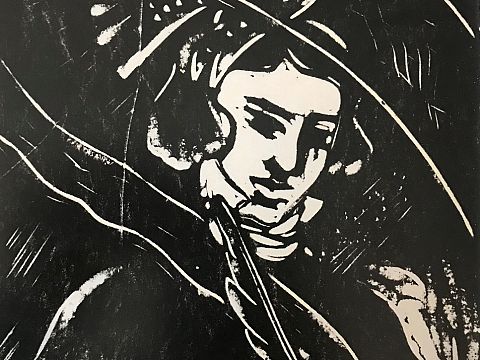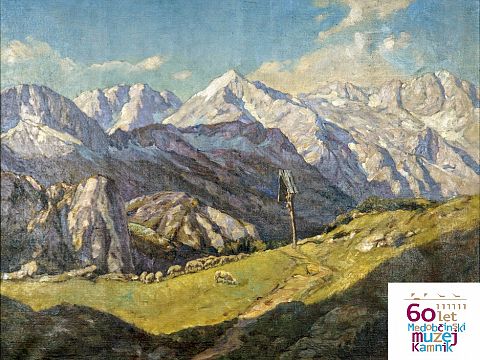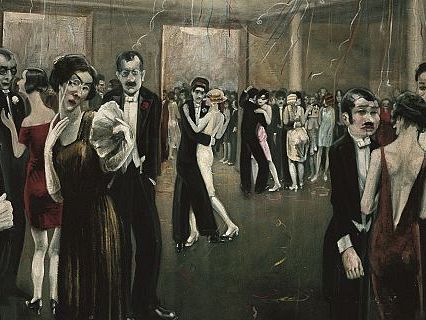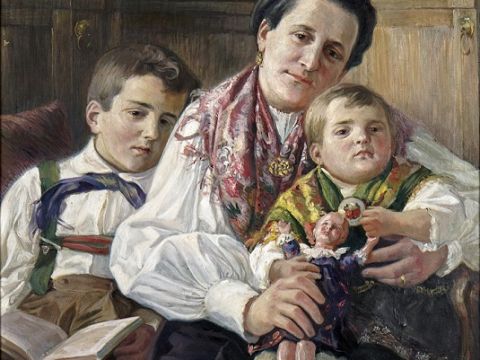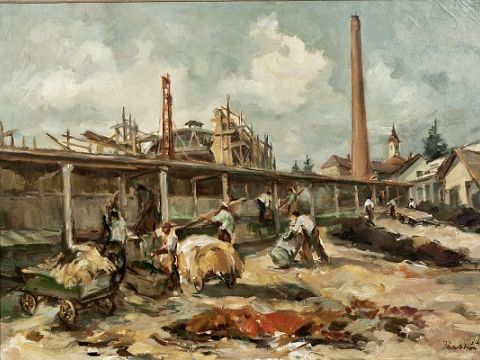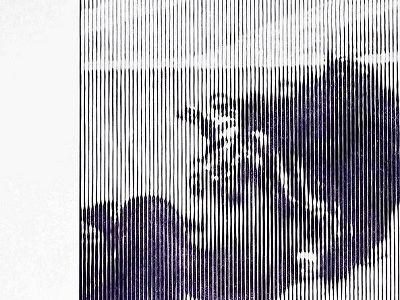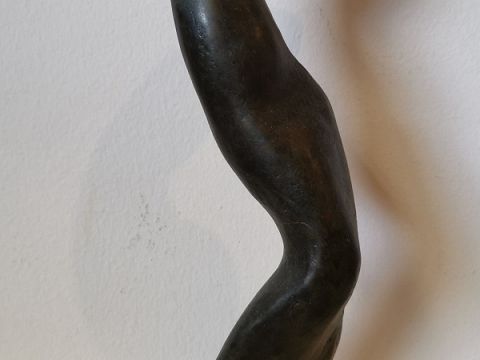- Info MM:K
Contact
Muzejska pot 3, 1241 Kamnik, Slovenia
+386 (0)1 8317 662
info@muzejkamnik.siDŠ: 92474519
MŠ: 5095417000
TRR: SI56 0110 0600 0057 156Opening hours MM:K
Opening hours for visitors:
Tuesday-Saturday: 10.00 – 18.00,
Sunday, Monday and holidays: closedMuseum – Zaprice Castle is from 15.4. until 15.9.2025 also open on Sundays from 10 a.m. to 2 p.m.
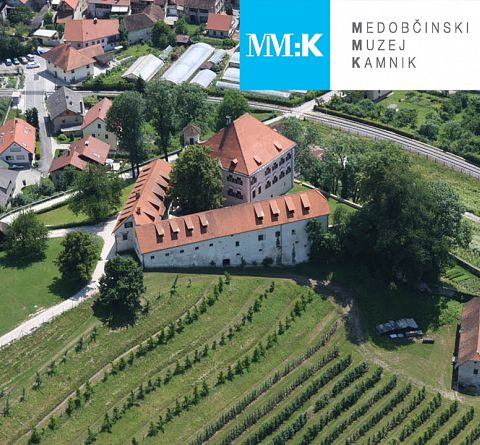
- Events & News
- Exhibitions
- Units
- Collections
- Education
- Shop
- About MM:K
Collection of contemporary art
This collection lives in the Miha Maleš Gallery and keeps the art works, documentation, bibliophile editions of 20th century artists. The most recognisable, and also for the Slovene history of art, the most valuable collections of Slovene artists Miha Maleš and Jakob Savinšek are in this collection.
There are also the works of Kamnik artists and artists connected to Kamnik, for instance Ivan Vavpotič (1877–1943), Dušan Lipovec (1952–2005), Alojz Berlec (1949), Lojze Perko (1909–1980) in Tomaž Perko (1947), Polde Mihelič (1923–2007), Aladin Lanc (1917–1990), Leon Homar (1914–1986), Stane Cuderman (1895–1946), Maks Koželj (1883–1956), Anton Koželj (1874–1954), Ferdo Mayer (1927–1994), Karel Zelenko (1925), Sonja Rauter–Zelenko (1918–2010) and others. The collection is constantly supplemented with donations and purchases.
Contact:
Curator of the collection: Saša Bučan, art historian, curator
sasa.bucan@gmail.com
The collection was founded in the year 1979, when Kamnik citizen, Miha Maleš, donated 2634 of his works as a gift to his town. Besides publications, the donation comprises 2591 works of art from all periods of his work, and a rich archive of documents, correspondence, photos and personal belongings of the artist. The donation is being complemented by re-purchases and received gifts.
Slovene actress and poetess Mila Kačič (1912–2000), Jakob Savinšek’s life companion, has defined by her will the Inter-minicipal Museum Kamnik as inheritor of 14 Jakob Savinšek statues. This donation was exhibited for the first time in the exhibition premises of the Miha Maleš Gallery in 2002. The collection is being supplemented with re-purchases and received gifts.
Museum stories
Ivan Vavpotič, Self-portrait, 1940, oil on canvas
Vavpotič often dealt with his image. Many self-portraits are preserved, but in the photograph, we see one of the last paintings painted by the artist in the later period. For Vavpotič a characteristic realistic portrait speaks of the artist's external appearance, but at the same time, through his eyes, we also perceive a person, his inner feelings, which he shows as a somewhat concerned, perhaps even bitten, unfulfilled man.
Miha Maleš, Embrace (The sun in May), 1930, monotype
Maleš put a love couple in the embrace in the central axis of the picture. The low-ranking scene is a meadow that is sputtered, with schematic rosaries, and the horizons are also closed by schematically drawn mountains. The representation of the horizon is indicated by the whiteness of the sheet, with a shade of blue on one side and the yellow sun on the other, which associates well with the depiction of the volatile and changing sky in May.
Jakob Savinšek, Pregnant, patinated plaster, 1949
The work Pregnant dated in the year 1949 and shows the female figure with a small oval head and a broadly rounded body. On the tense abdomen, the resting hands indicate the state of expectation of the depicted woman. In this statue Savinšek abandoned all the details that would hinder the understanding and vision of the body, its volume.
Miha Maleš, Park Tivoli in winter, 1940, oil on canvas
Beginning in 1934, Maleš’s famous series of Tivoli, the landscapes of our formerly beautiful park in Ljubljana in various seasons, are beginning to emerge. From a still ordinary motive, Maleš could extract the mood of nature. In front of us, there are trees, barely visible in a snowstorm, set on the bank, snow-covered walking paths, a solitary walker. In addition to the colour values that Tivoli motives bring to the development of Slovenian landscaping, it is necessary to emphasize the compositional balance and even the sense of the melody of the depicted trees and people.
Miha Maleš: illustration of the Prešeren Wreath of Sonnets, 1937
In 1937 the first book with Miha Maleš' illustration of the Prešeren Wreath of Sonnets was published. The introductory text was written by Rajko Ložar. It is about thirty celestial illustrations - black and white linoleums,
Maks Koželj, Mountains with sheep and a sign, around 1935
Maks Koželj created numerous depictions of Kamnik and the Kamnik Alps in the technique of watercolour and oil.
Stane Cuderman, Carnival Dance, 1930
The work Carnival Dance expresses what Cuderman devoted most of his painting to – the figure as such, which was his eternal inspiration.
Anton Koželj, Portrait of a Woman with Children in Slovene National Costume, 1920
In front of us sits a woman in Slovene national costume without a hat, in her lap is a girl with a toy in her hands, next to them sits a boy with a book. They are all customized in a slightly reworked national costume, especially the boy's costume with leather pants, suspenders and a scarf
Lojze Perko, Factory Utok, 1954
The work of the academic painter Lojze Perko (1909-1980) was created in 1954, which depicts the Utok factory in Kamnik, when it was nationalized and expanded tremendously from the once small private leather factory of Tone Knaflič. Perko designed the picture from the courtyard side.
Oliver Pilić, Pearl Earring, hand-printed woodcut, 2017
The graphic work Pearl Earring, in the woodcut technique and printed by hand, is the work of a younger generation Kamnik artist, Oliver Pilić.
Jakob Savinšek, Female figure/Rhythm II, 1953, bronze
Jakob Savinšek designed the design of many figures in drawings, where we can follow his many ideas and concepts, some of which were not realized. His basis has always been the human figure, in which, as he himself said, all forms merge. That is why he studied problems of balance, convex and concave forms, planes and curves, proportions, movement. He found the transition from a frontal standing posture to a moving position in the darkness of the dancers, where he presented the faces schematically and, like the bearer of individual sculptures, highlighted the movement.



